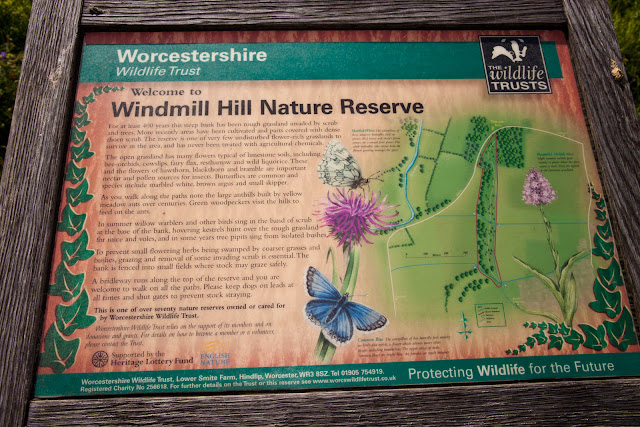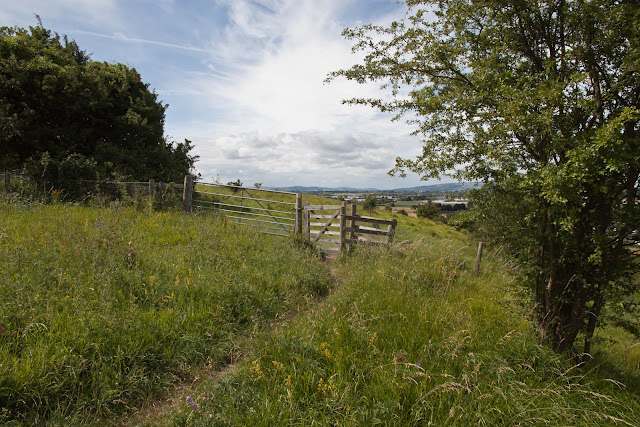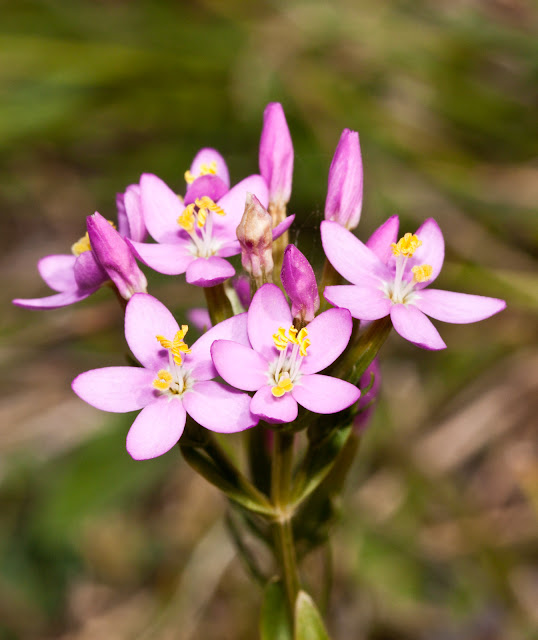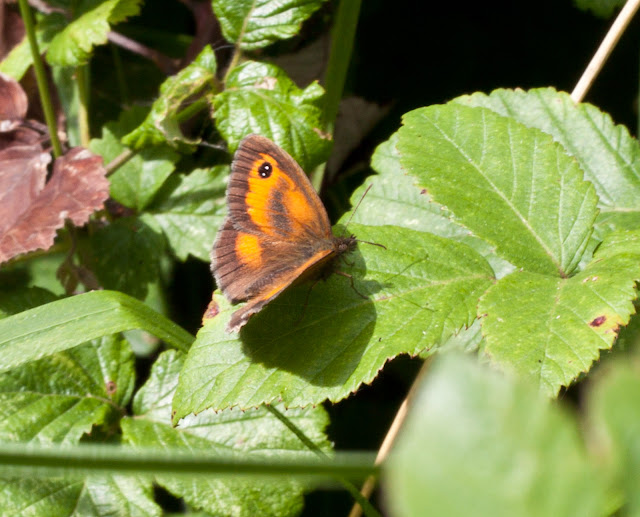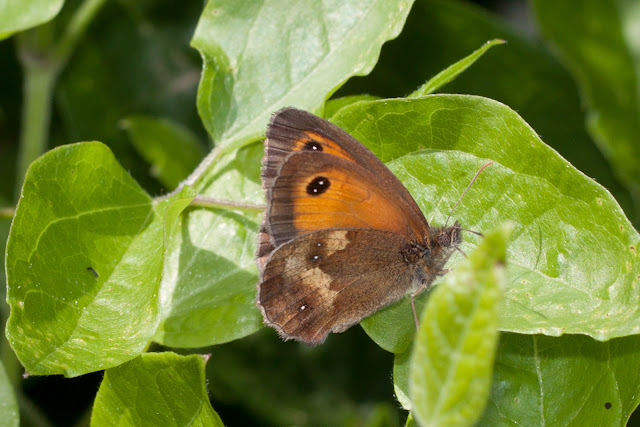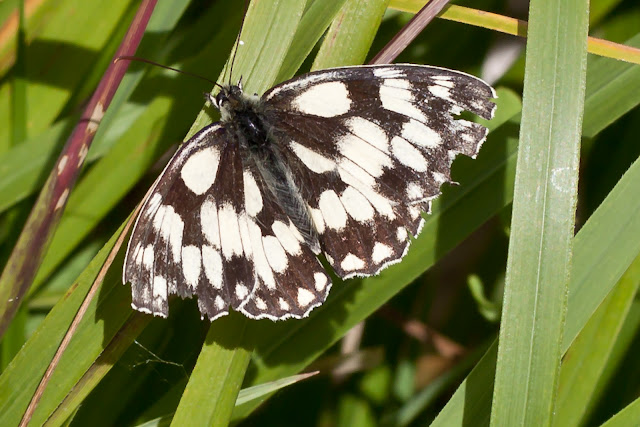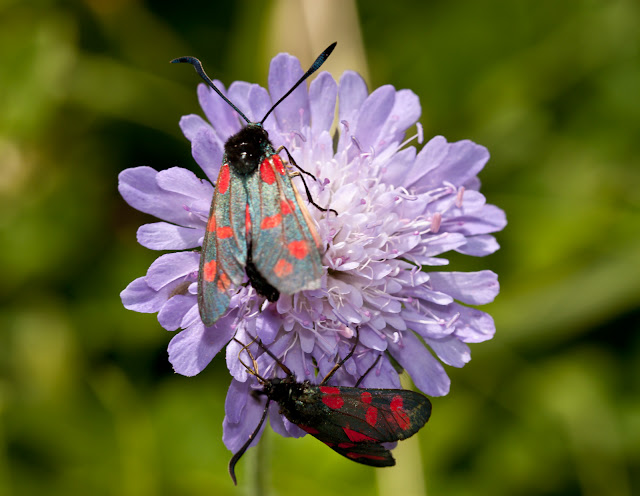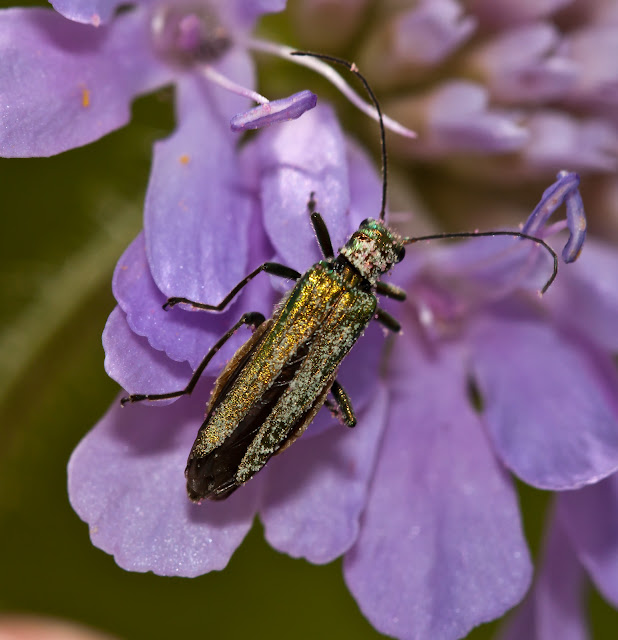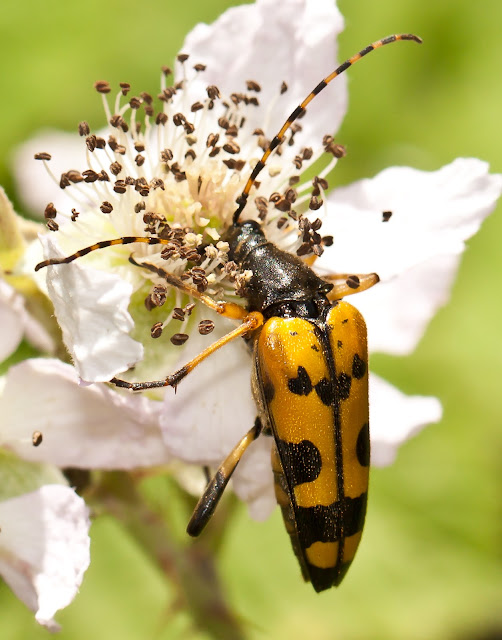Flies but they don't Hover.
Conops quadrifasciata
First I thought it was a hoverfly, possibly of the crysotoxum family because of the long antennae .But I couldn't find it in any of the books. Then I thought it must be a wasp but couldn't find it and realised that it must be a fly because of just 2 wings (Diptera) and eventually tracked it down as a conopid fly
Tachina fera
This chap is a real beauty! and BIG. Click on the picture for larger view. thought it was some kind of Horsefly and as there were a lot of these about I was a bit wary of being bitten. However they are pretty harmless unless you are a caterpillar. The young larvae are internal parasites of caterpillars boring inside them.
Forest Shieldbug - Pentatoma rufipes
Easily identified as it has very "square shoulders" compared to most other shieldbugs.
Purple Hairstreak - Neozephyrus quercus
You will have to take my word on the "Purple" as he just did not want to show his upper wings which apparently are indeed purple.
Wasp sp
Not sure if it was a common wasp or not but strinkingly marked and nicely contrasted against the "thistle"
Hoverfly - Dasysyrphus albostriatus
There was a muti headed thistle which was teeming with hoverflies. There were 20 or 30 Marmalade Flies - Episyrphus balteatus and this one who stood out from the crowd.
Marmalade Fly - Episyrphus balteatus
And here are just a few of the Marmalade Flies. They really are abundant everywhere you go at the moment whether that is the garden or out in the wild.





























